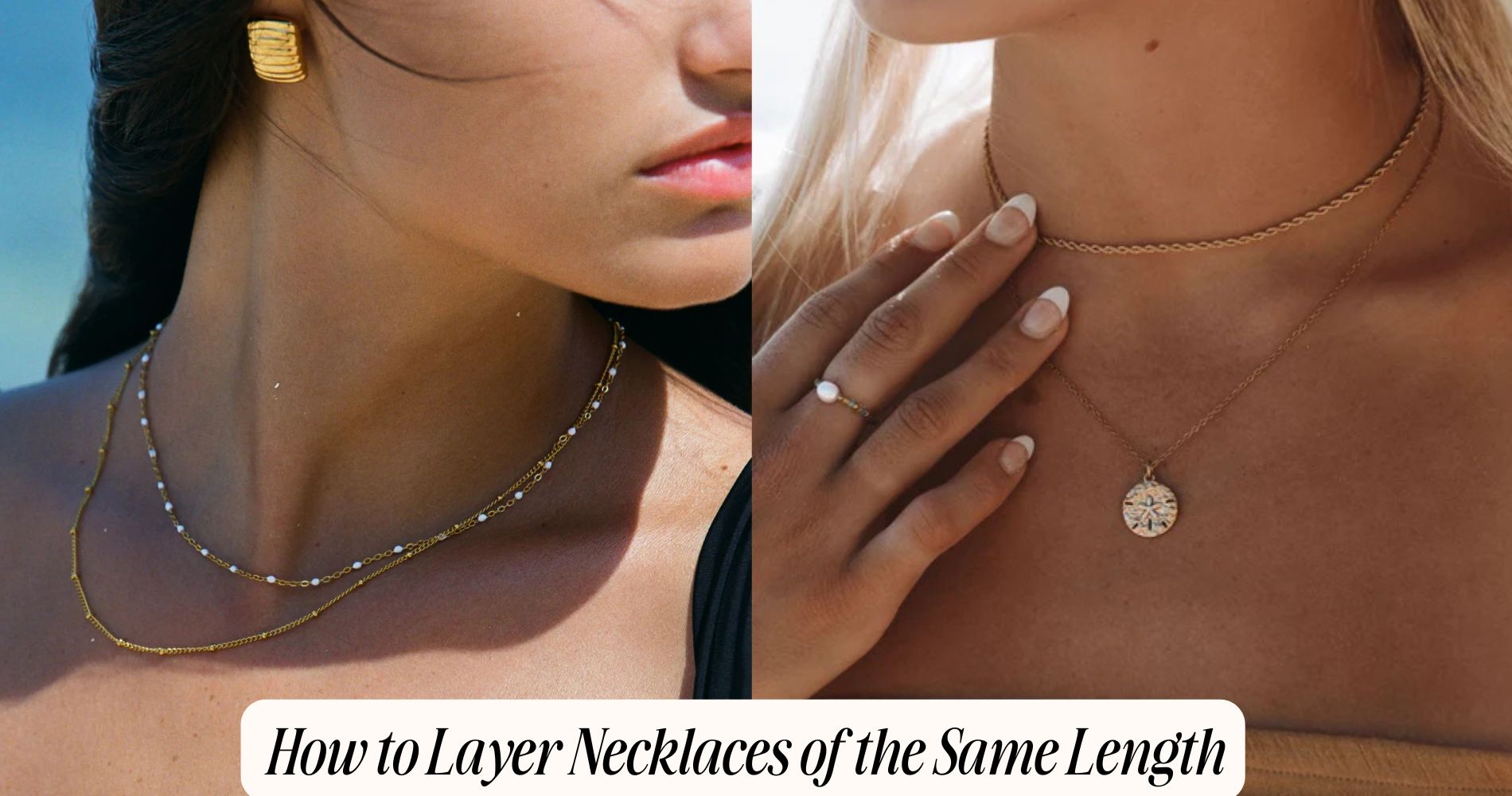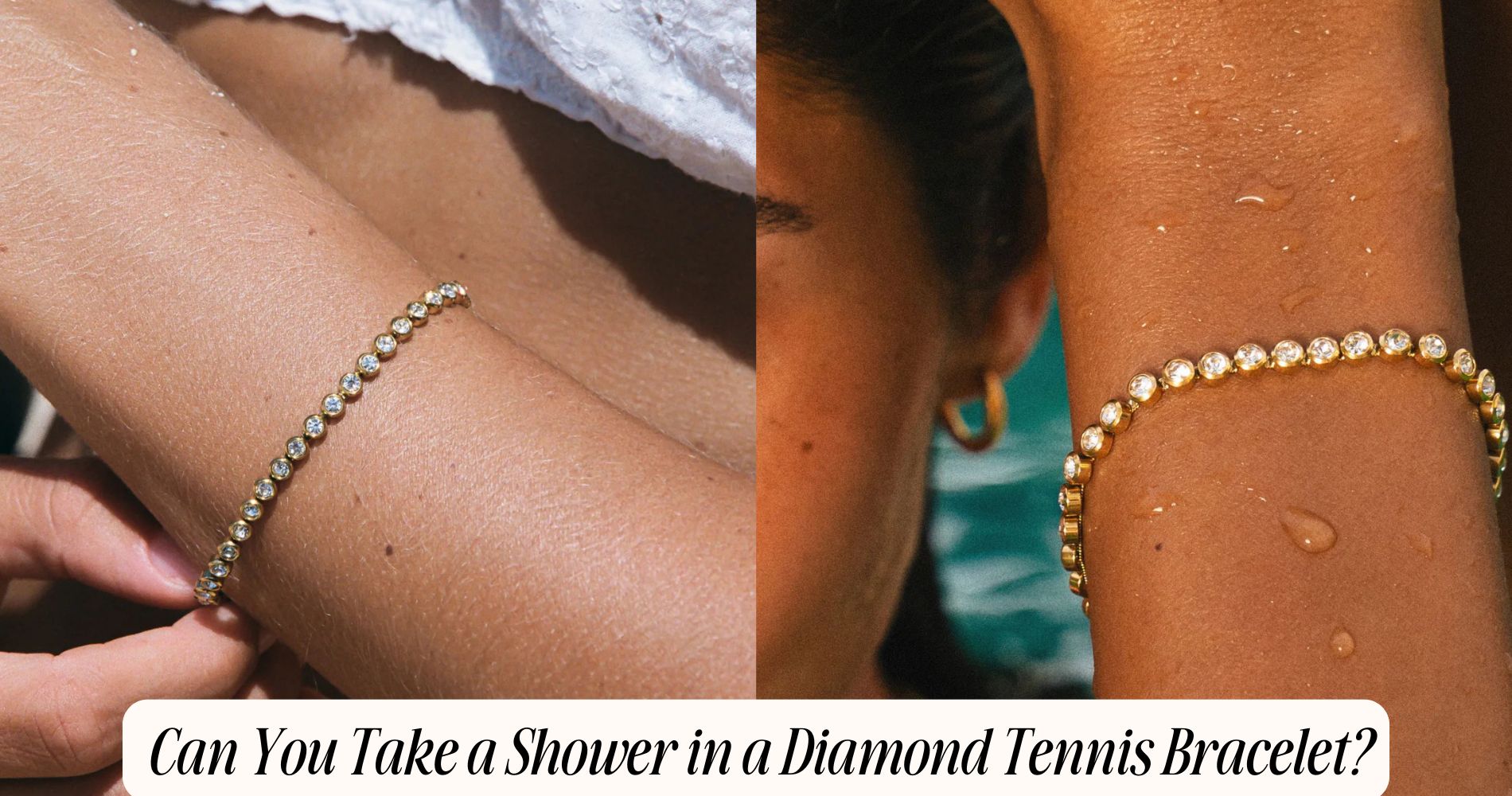
What Is Hypoallergenic Jewelry? Protect Your Skin
What is Hypoallergenic Jewelry? Hypoallergenic jewelry is designed to protect your skin from irritation and allergic reactions, making it ideal for those with sensitive skin. Crafted from materials like stainless steel, titanium, or 14k gold, this type of jewelry minimizes nickel content, one of the most common allergens. While "hypoallergenic" doesn’t mean entirely allergen-free, it significantly reduces the risk of skin sensitivity. Options like those in our hypoallergenic necklace collection offer stylish designs that let you accessorize confidently and comfortably. Read on to discover more about the benefits and care of hypoallergenic jewelry.
Understanding Hypoallergenic Jewelry
Hypoallergenic jewelry is often a go-to choice for those with sensitive skin. If you've ever experienced skin reactions or discomfort from wearing certain pieces, you know how frustrating it can be. Jewelry allergies can stem from various metals and materials that trigger irritation. Hypoallergenic options minimize this risk, making them a safer alternative for your skin.
When you choose hypoallergenic jewelry, you're opting for pieces made from materials less likely to cause allergic reactions. Typically, these items use precious metals like surgical-grade stainless steel, titanium, or certain types of gold.
These materials are designed to reduce the chance of skin irritations, allowing you to wear your favorite accessories without worry.
It's essential to understand that while hypoallergenic jewelry is a great option, it doesn't mean it's entirely free from allergens. Some individuals may still react to specific alloys or finishes.
Always pay attention to how your skin responds when you wear new jewelry. By being mindful of your choices, you can enjoy beautiful accessories without the discomfort of skin reactions or jewelry allergies.
Common Allergens in Jewelry
Many people don't realize that common metals and materials used in jewelry can lead to allergic reactions. If you've ever experienced skin reactions after wearing a piece of jewelry, you might be one of the many affected by nickel allergies.
Nickel is often found in affordable jewelry, including earrings, necklaces, and bracelets. It's notorious for causing irritation, rashes, and even swelling, particularly for those with sensitivities.
Additionally, other materials like brass and certain plating can contain nickel or similar allergens, contributing to skin reactions as well.
Even items labeled "silver" or "gold" can contain these problematic metals if they haven't been crafted with hypoallergenic standards.
It's essential to be cautious when choosing jewelry, especially if you know you have sensitive skin. Pay close attention to the materials listed and look for pieces specifically labeled as hypoallergenic.
This way, you can enjoy your accessories without the worry of triggering an allergic response, allowing you to express your style while keeping your skin happy and healthy.
Materials Used in Hypoallergenic Jewelry
When choosing hypoallergenic jewelry, you'll want to take into account the materials used to avoid any irritation.
Common hypoallergenic metals like titanium and surgical stainless steel are great options, but there are also non-metal alternatives worth exploring.
Additionally, some pieces may feature special coatings or treatments that enhance their hypoallergenic properties.
Common Hypoallergenic Metals
A variety of metals are known for their hypoallergenic properties, making them ideal choices for sensitive skin. One of the top contenders is titanium. Its advantages include being lightweight, durable, and resistant to corrosion. This means you can enjoy wearing your jewelry without worrying about irritation or allergic reactions.
Another great option is stainless steel, which is a nickel alternative. This alloy typically contains a lower percentage of nickel, reducing the risk of skin sensitivity. It's also affordable and comes in various styles, making it a popular choice for hypoallergenic jewelry.
You might also consider gold and platinum, particularly when they're alloyed with metals that have low allergenic properties. For instance, 14k or 18k gold can be mixed with metals like palladium, which are gentler on the skin.
Lastly, if you're looking for something truly unique, you might explore cobalt chrome. This metal combines the strength of cobalt with hypoallergenic properties, giving you both durability and comfort.
Choosing any of these metals can help you enjoy your jewelry while protecting your skin from irritation.
Coatings and Treatments Used
Many hypoallergenic jewelry pieces incorporate specialized coatings and treatments to enhance their compatibility with sensitive skin. These coatings act as a barrier, preventing direct contact between your skin and any potential allergens present in the metal.
Common coating types include rhodium, which is often applied to silver or white gold, and prevents tarnishing while offering a brilliant shine. Another popular option is gold plating, which can provide a luxurious finish without the risk of nickel exposure.
In addition to coatings, various treatment methods can improve jewelry's hypoallergenic properties. One such method is electroplating, where a thin layer of a less reactive metal is deposited onto the jewelry. This not only enhances durability but also reduces the likelihood of skin irritation.
Another technique is passivation, often used for stainless steel, which creates a protective layer that minimizes corrosion and allergenic reactions.
When choosing hypoallergenic jewelry, it's vital to take into account these coatings and treatments. They play an important role in ensuring your jewelry remains comfortable to wear, allowing you to enjoy your accessories without worry.
How Hypoallergenic Jewelry Works
Hypoallergenic jewelry uses specific materials that minimize the risk of allergic reactions, making it ideal for those with sensitive skin.
By choosing metals like surgical stainless steel, titanium, or certain types of gold, you can enjoy beautiful pieces without irritation.
Understanding how these materials work can help you make informed choices for your jewelry collection.
Materials Used in Jewelry
When it comes to choosing hypoallergenic jewelry, understanding the materials used is essential for ensuring comfort and safety.
You'll want to look for metals that are less likely to cause skin reactions, such as surgical stainless steel, titanium, or niobium. These materials are often free from nickel, which is a common allergen.
If you're interested in eco-friendly options, consider jewelry made from recycled metals or sustainable materials.
Bamboo, wood, or even biodegradable plastics can be stylish and safe choices.
When it comes to gemstone choices, opt for natural stones that haven't been treated with harsh chemicals.
Gemstones like quartz, amethyst, or lab-created stones can provide beauty without compromising your skin's health.
Be mindful of the settings and clasps, too.
Look for hypoallergenic coatings or finishes that can further reduce the risk of irritation.
Your comfort is key, so take the time to explore different materials and find what works best for you.
Benefits for Sensitive Skin
For those with sensitive skin, choosing hypoallergenic jewelry can make a significant difference in comfort and overall wearability. Unlike traditional jewelry, which often contains metals like nickel that can cause skin irritation, hypoallergenic options are crafted from materials designed to minimize allergic reactions. This means you can wear your favorite pieces without worrying about discomfort or rashes.
Hypoallergenic jewelry typically features materials such as stainless steel, titanium, or sterling silver, all of which are less likely to trigger allergic responses. By selecting these materials, you're not just enhancing your comfort; you're also prioritizing allergy prevention. This can be especially beneficial during long wear, such as at work or special occasions, where irritation can be distracting.
Additionally, hypoallergenic jewelry often undergoes rigorous testing to verify it meets safety standards, giving you peace of mind. When you choose pieces specifically labeled as hypoallergenic, you're actively protecting your skin and enjoying the beauty of jewelry without the risk of adverse reactions.
Benefits of Wearing Hypoallergenic Jewelry
In recent years, the popularity of hypoallergenic jewelry has surged, and for good reason. If you have skin sensitivity or allergies to certain metals, this type of jewelry offers a safe and stylish solution. Unlike traditional pieces, hypoallergenic options are crafted from materials that won't irritate your skin, allowing you to wear your favorite accessories without worry.
Choosing hypoallergenic jewelry means you're opting for quality and comfort. Many alternatives, such as titanium, surgical stainless steel, and nickel-free metals, provide durability while minimizing the risk of allergic reactions. This means you can enjoy your jewelry collection without constantly checking for signs of irritation.
Additionally, hypoallergenic pieces often come in a variety of designs, so you won't have to compromise on style. Whether you prefer minimalist looks or bold statement pieces, there's something for everyone.
Myths About Hypoallergenic Jewelry
Many people believe that hypoallergenic jewelry is completely free of allergens, but that's a common misconception. While hypoallergenic pieces are designed to minimize the risk of allergic reactions, they aren't entirely devoid of potential allergy triggers.
It's important to understand that "hypoallergenic" often means that the jewelry contains lower levels of common allergens, such as nickel, rather than being entirely allergen-free.
Another myth is that all hypoallergenic materials are the same. In reality, different materials can affect individuals differently. For instance, some people may still react to certain metals like titanium or stainless steel, depending on their unique sensitivities.
You might also think that once you choose hypoallergenic jewelry, you won't experience any irritation. Unfortunately, skin sensitivities can change over time, and factors like humidity, skin pH, and exposure to lotions or perfumes can influence your reactions.
Choosing the Right Pieces
When selecting hypoallergenic jewelry, it's essential to take into account your personal sensitivities and preferences.
Start by identifying which materials work best for you. Common hypoallergenic options include titanium, stainless steel, and sterling silver. These materials help minimize the risk of allergic reactions while still offering a variety of styles.
Next, think about choosing styles that reflect your personality. Whether you prefer minimalist designs or bold statement pieces, there are plenty of hypoallergenic options available.
Don't hesitate to experiment; find earrings, necklaces, or bracelets that resonate with your individual taste.
Pay attention to the finish as well. Polished surfaces can reduce irritation, while certain textures might be more likely to trap dirt and allergens.
Frequently Asked Questions
Can Hypoallergenic Jewelry Cause Reactions in Extremely Sensitive Individuals?
Yes, hypoallergenic jewelry can cause reactions in extremely sensitive individuals. Even if it's designed for metal allergies, some skin sensitivities might still trigger irritation or allergic responses due to unique body chemistry. Always test before wearing.
How Can I Test if Jewelry Is Truly Hypoallergenic?
To test if jewelry's truly hypoallergenic, you can perform allergy testing on your skin. Check the metal composition for common allergens like nickel, ensuring it fits your needs without causing irritation or reactions.
Does Hypoallergenic Jewelry Require Special Cleaning Methods?
Hypoallergenic jewelry doesn't need special cleaning methods, but using gentle cleaning materials is essential. For maintenance tips, regularly wipe pieces with a soft cloth and avoid harsh chemicals to keep them looking their best.
Can I Wear Hypoallergenic Jewelry While Swimming or Exercising?
You can wear hypoallergenic jewelry while swimming or exercising, but make certain it's securely fastened. For swimming safety, avoid chlorinated pools if possible. For exercise comfort, choose lightweight pieces that won't interfere with your movements.
Conclusion
To summarize, hypoallergenic jewelry is a smart choice for those with sensitive skin. By understanding the materials and benefits, you can confidently select pieces that won't irritate you. Remember to care for your jewelry properly and debunk any myths you might encounter. With a bit of research, you'll find beautiful hypoallergenic options that suit your style. So go ahead, explore your choices, and enjoy wearing jewelry that protects your skin while looking fabulous!

























Leave a comment
This site is protected by hCaptcha and the hCaptcha Privacy Policy and Terms of Service apply.